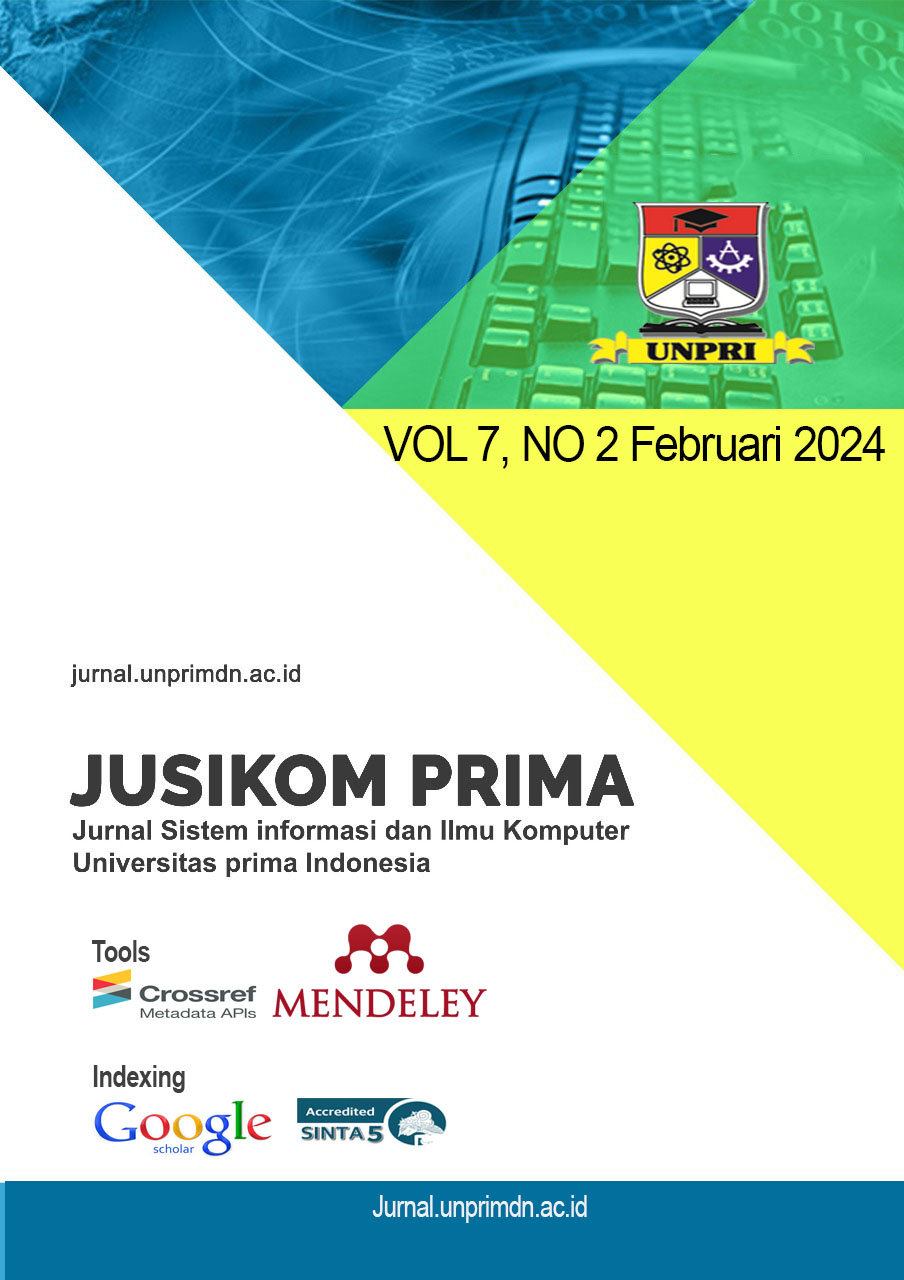APPLICATION OF THE ARIMA MODEL FOR PREDICTION OF MONTHLY DIVORCE RATE IN THE RELIGIOUS COURTS IN SOUTH SUMATRA
DOI:
https://doi.org/10.34012/jurnalsisteminformasidanilmukomputer.v7i2.4649Abstract
This research discusses predictions of divorce rates in Religious Courts in South Sumatra. This is important to do because the divorce rate has a changing trend. Sometimes high and sometimes low but always at a high trend number, so soCourt officials or social scientists in developing effective strategies for overcoming marriage problems, allocating resources, or supporting families who need counseling can be prepared in advance, especially at the Religious Courts in South Sumatra to reduce the divorce rate because the purpose of marriage is not to divorce. This research discusses the divorce rate in terms of predicting/forecasting because much research has been done on the divorce rate by examining the causes of divorce. This research uses the ARIMA (Autoregressive Integrated Moving Average) model to predict. The ARIMA model is a method that has been widely used in forecasting research to get good results. The research results are that the ARIMA model used is (1,0,2) and (2,0,2), with an error rate of only 0.48% using the MAPE method.
Keywords: predictions, numbers, divorce, arima, mape.References
Albeladi, K., etc.(2023). Time Series Forecasting using LSTM and ARIMA. International Journal of Advanced Computer Science and Applications, 14(1).313-320.
Alsuwaylimi, A. A.(2022). Comparison of ARIMA, ANN and Hybrid ARIMA-ANN Models for Time Series Forecasting. Information Sciences Letters An International Journal. 2(12).1003-1016.
Alshawarbeh, E. S., Shafqat, A., Alraqad, T., Moumen, A., Saber, H., & Shafqat, R. (2023). Divorce Prediction Using Machine Learning Algorithms in Ha'il Region, KSA. 1-13.
Atashi, V., Gorji, H. T., Shahabi, S. M., Kardan, R., & Lim, Y. H. (2022). Water level forecasting using deep learning time-series analysis: A case study of red river of the north. Water, 14(12), 1-18.
Etaf Saleh, Alshawarbeh .etc (2023). Divorce Prediction Using Machine LearningAlgorithms in Ha'il Region, KSA.17-21.
Downloads
Published
How to Cite
Issue
Section
License
Copyright (c) 2024 Sri Fitriati, Dian Palupi Rini, Firdau -

This work is licensed under a Creative Commons Attribution-ShareAlike 4.0 International License.
Authors who publish their manuscripts through the Journal of Information Systems and Computer Science agree to the following:
- Copyright to the manuscripts of scientific papers in this Journal is held by the author.
- The author surrenders the rights when first publishing the manuscript of his scientific work and simultaneously the author grants permission / license by referring to the Creative Commons Attribution-ShareAlike 4.0 International License to other parties to distribute his scientific work while still giving credit to the author and the Journal of Information Systems and Computer Science as the first publication medium for the work.
- Matters relating to the non-exclusivity of the distribution of the Journal that publishes the author's scientific work can be agreed separately (for example: requests to place the work in the library of an institution or publish it as a book) with the author as one of the parties to the agreement and with credit to sJournal of Information Systems and Computer Science as the first publication medium for the work in question.
- Authors can and are expected to publish their work online (e.g. in a Repository or on their Organization's/Institution's website) before and during the manuscript submission process, as such efforts can increase citation exchange earlier and with a wider scope.














